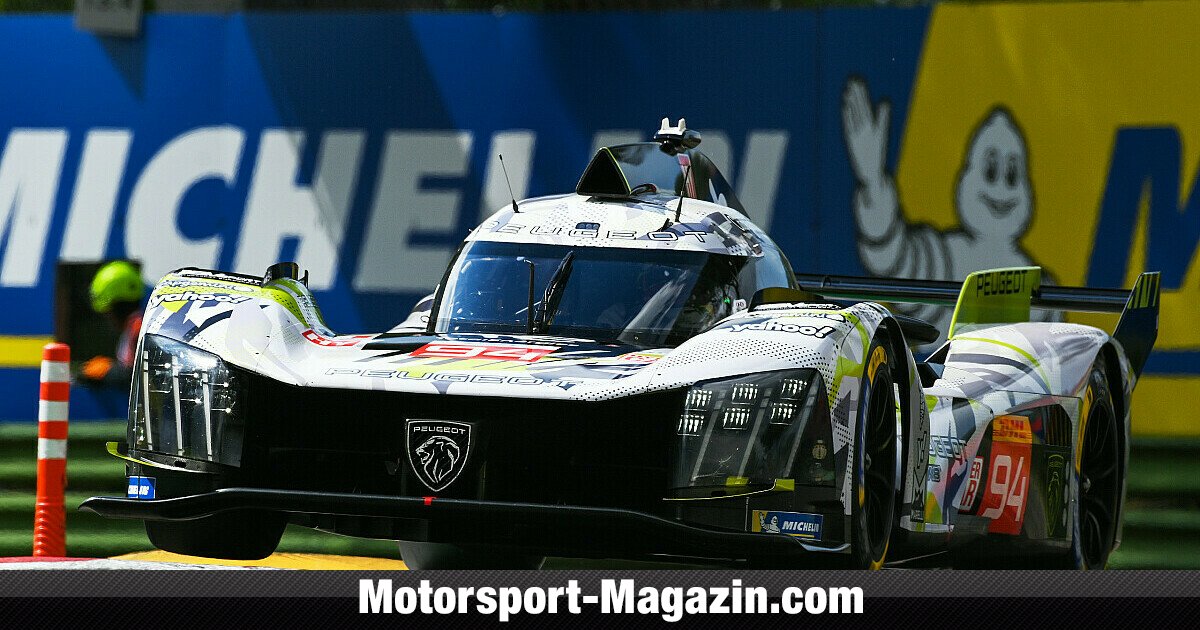The 6-hour race in Spa is something like the unofficial WEC dress rehearsal for the 24 Hours of Le Mans. Since the Endurance World Championship existed in its current form, with the exception of 2021, the race was the last stop before the season highlight on the Sarthe. Spa 2024 is particularly important for a manufacturer.
We’re talking about Peugeot. The French sent a radical evolution of the 9X8 onto the track for the first time at the second race of the WEC season in Imola. The new Peugeot received a rear wing and was equipped with new tire dimensions. Instead of 31 centimeter wide tires at the front and rear, Peugeot, like its competitors in the hypercar class, now uses 29 centimeter tires at the front and 34 centimeter tires at the rear.
Peugeot explains revolution: concept change, more uncomplicated variant
A fundamental adjustment that required a number of further modifications to the entire vehicle. Stellantis motorsport director Jean-Marc Finot explained in Imola: “We had to shift some weight to the rear so that the 34 tires work better. We moved some parts from the front to the back, so a lot of work on the vehicle architecture.”
“For stability reasons, we had to shift the aero balance back to the same extent as the weight balance. So we had to increase the downforce at the rear and reduce the downforce at the front,” he explained. Overall, he estimated the changes to the body at 90 percent. The hood and rear cover are completely new. The monocoque and the survival cell are unchanged.
A lot of work. But still less effort than continuing to use the old model. “We could have kept the concept. But it would have been necessary to carry out further work on the underbody, it would have been necessary to redesign and re-homologate the crash structure,” said Finot.
Weak debut: Why did Peugeot have no chance in Imola even with a rear wing?
This was partly due to the fact that the car’s fine-tuning had not yet been worked out in detail before the racing debut in Imola. Instead, Peugeot focused on the reliability of the car in advance and completed the two permitted endurance tests, each lasting 24 hours.
With the experience gained from these tests and from Imola, we’re off on the Ardennes rollercoaster. At Spa, Peugeot, together with Alpine, received the biggest concessions on maximum stint energy. However, the car still remains the heaviest in the field. In Spa the 9X8 weighs 1065 kilograms.
Traction and bumps: The ‘new’ Peugeot can do this better
“Behind the steering wheel you especially feel this traction, which has already improved,” said Müller, confirming successes on this front. However, he still sees a need to catch up with the fastest hypercars: “We are not yet where we want to be. If you compare that with the Ferrari or the Toyota, they can get out of the slow corners well,” said the former DTM driver. Pilot.
Another problem with the 9X8 in its original version was that it was sensitive to bumps. On tracks like the Losail International Circuit, this problem had little impact. That was probably one of the reasons why the rear wing-less car was one of the front runners at its farewell performance in Qatar and was in P2 until it retired shortly before the end. The alternative to this was Sebring. On the extremely bumpy course in Florida, Peugeot 2023 experienced a devastating defeat.
This was also handled successfully and successfully. “That the car absorbs bumps better and drives better over curbs. That wasn’t exactly a strength of the 9X8 in the past and that has become significantly better,” concluded Müller from his first experiences in Imola, a track on which, above all, the handling of the Kerbs is subjected to extensive testing.
